[ad_1]
This post may contain affiliate links. We may receive a small commission, at no cost to you, if you make a purchase. Read Disclosure.
Washington DC is the thriving capital of the United States and is home to some of the most iconic and well-known monuments in the country; The White House, The Washington Memorial, and The U.S. Capitol to name a few…
But when it comes to a landmark that’s both intricately designed, remarkably beautiful, and historically fascinating, none can rival that of the Library of Congress.
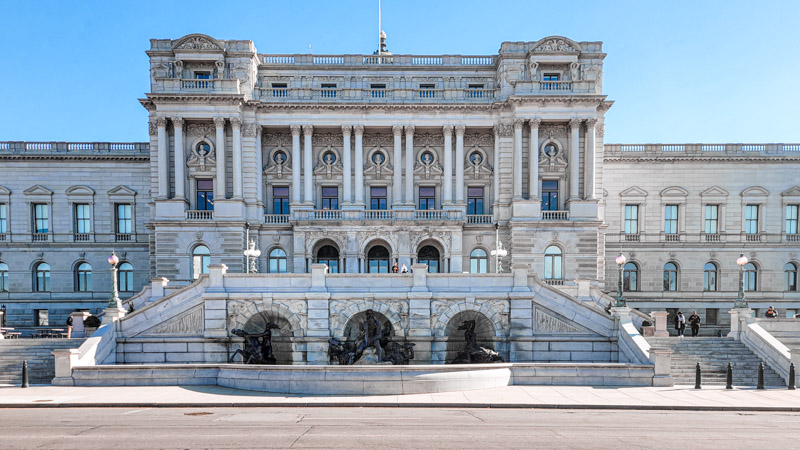
This is the world’s largest library and an unmissable attraction in Washington D.C.
Its facade is inspired by the Italian Renaissance, making it one of the most beautiful buildings in the city. And the beauty doesn’t stop from the outside, it gets even more impressive after you’ve entered.
If you’re thinking of visiting the Library of Congress in Washington D.C, but you’re not sure what there is to see or how to visit as a tourist, then this guide has everything you need to know…
About the Library of Congress
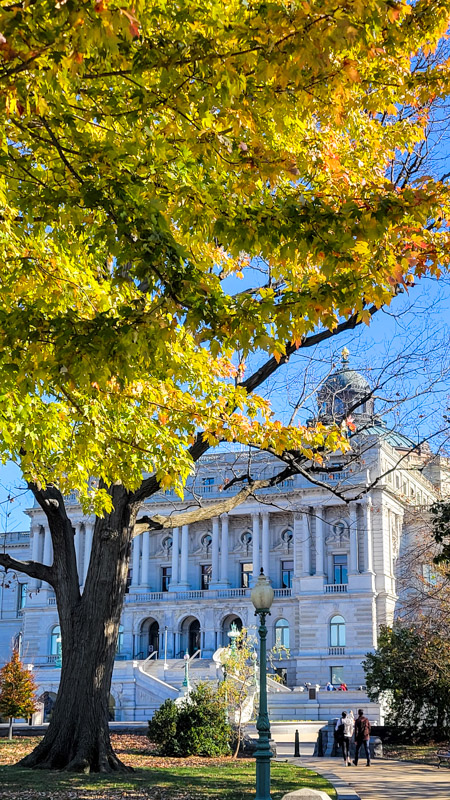
The Library of Congress is the largest library in the world, with a collection of around 173 million items. It’s also said to grow by 2 million items per year. To house all this collection, the library is made up of three buildings.
The oldest is the Thomas Jefferson Building, which is the one that most tourists come to see.
Then there is the James Madison Memorial Building located directly opposite on the other side of Independence Avenue and the John Adams Building on 2nd Street SE.
All buildings can be visited by tourists, but you have a researchers permit or a Reader Identification Card to enter the reading rooms. There are a few rotating exhibitions in the James Madison Memorial Building, but the John Adams Building is mostly offices and not worth visiting as a tourist.
The Library of Congress is a research library, so it’s not a library full of bookshelves lined with books.
To see a book here, you need to register as a researcher or get a free Reader Identification Card, and then submit your request for a specific book to the librarians.
A Brief History of the Library of Congress
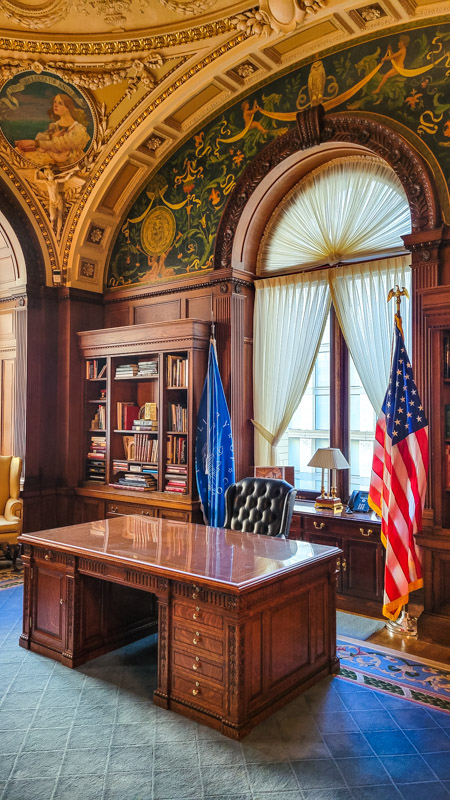
It was founded in 1800 by President John Adams. It was originally housed in the U.S. Capitol building, where it lived for around 100 years before it was moved during the war in 1814 after the British invaders burned down the U.S. Capitol building, destroying its collection of 3,000 books.
In 1815, plans to rebuild the library’s collection were approved by President Thomas Jefferson, who included his personal library of 6,487 books.
On Christmas Eve in 1851, two-thirds of the collection were destroyed in yet another fire, but many of those volumes have been replaced. Since then, the library has grown and grown each year.
Things to See at the Thomas Jefferson Building, Library of Congress
You might be thinking that a library is just a library, but the Library of Congress is anything but. I only booked a tour because it was free, the biggest library so thought she’d love it.
I was blown away at how beautiful the Library of Congress is. The interior design is spectacular and made me feel like I was exploring ancient buildings in Europe.
So even if you don’t care much for books or reading, you will be fascinated by this Washington DC attraction.
There are some prized possessions and interesting monuments in the library that are worth checking out on any visit. Here are just a few…
Court of Neptune Fountain
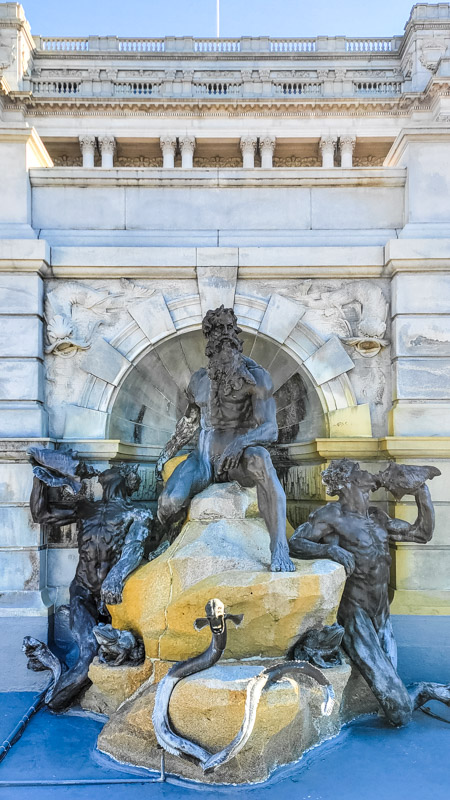
The first thing to see at the Library of Congress is the dramatic Court of Neptune Fountain out the front of the building. This is the first sign you’re bout to encounter something special as you walk up the stairs into the building.
It’s a group of bronze sculptures created by Roland Hinton Perry in 1897–98.
A muscular King Neptune, his sons the tritons blowing conches, and sea nymphs on horseback and water spouting frogs, serpents and turtles form the court.
Unfortunately, the water wasn’t running when we visited, but still spectacular to see.
The Great Hall
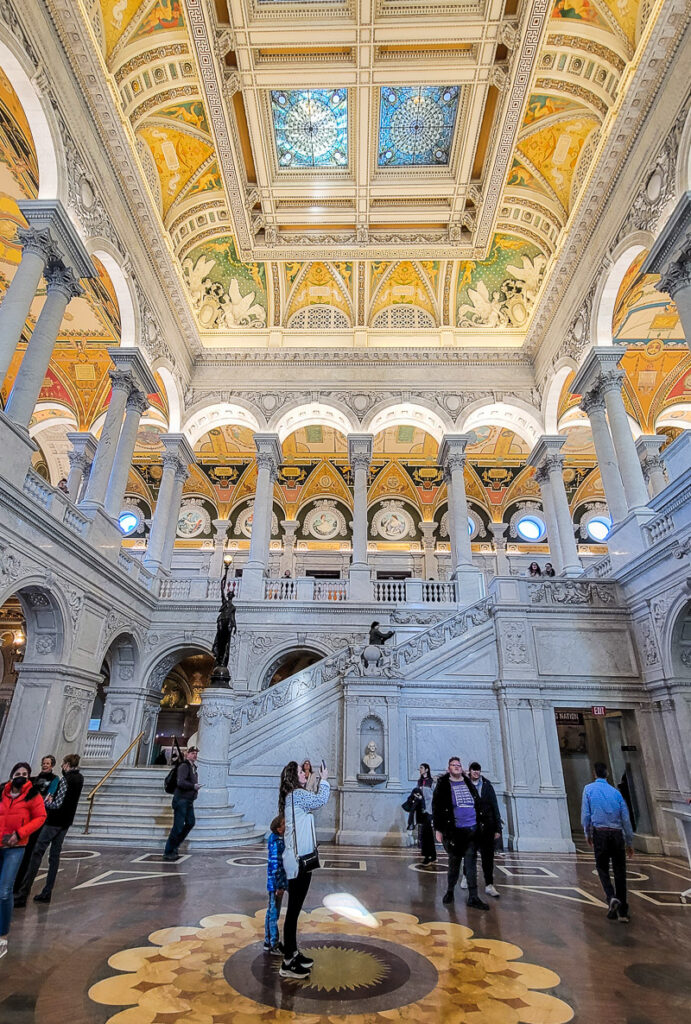
The first place you see when you walk into the Library of Congress is The Great Hall, and what an entrance!
When the hall was constructed in 1897, it was the room that gave the Library of Congress its reputation as a sophisticated and expensive library. It also highlights the enormity of the place, with high ceilings, tall arches, and elongated pillars.
It has been elaborately designed in a Renaissance style and decorated with art by almost 50 American painters and sculptors, such as a Thomas Jefferson and George Washington bust.
Around the hall, you’ll find many scriptures, names, and quotes from famous authors that were popular during the time the building was constructed.
Mosaic of Minerva
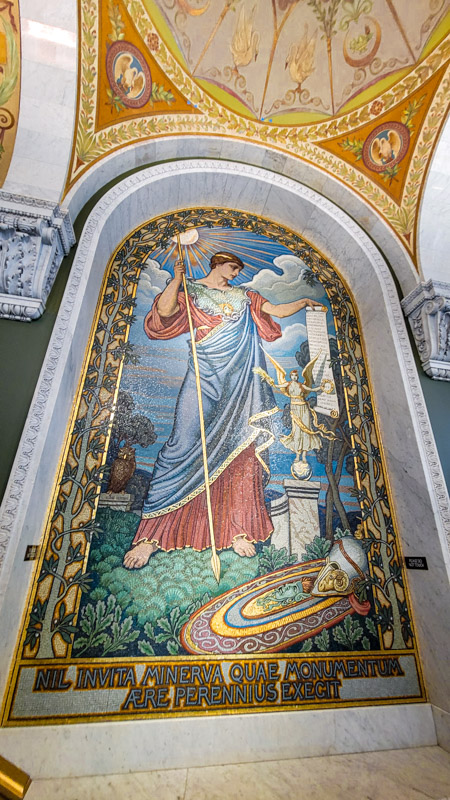
Located on the second floor of the Great Hall is a mosaic of Minerva, the Roman Goddess of learning and wisdom.
The mosaic was created by artist Elihu Vedder and is a symbol of peace and knowledge. In the mosaic, you see Minerva holding a scroll with the words of various fields of science written in a listicle format.
The mosaic sits in a central arch and sits next to a statue of Nike, the Greek God that represents victory. The statue of Nike is wearing a laurel wreath, meaning victory, and holding a palm branch, symbolizing peace.
Pay attention to the signs in this area. You are not allowed to stop on the stairs to take photographs of the mosaic Minerva, something many people weren’t paying attention to get their selfies. As the staircase is narrow, it does obstruct traffic up to the viewing platform for the Reading Room.
My photo above was taken from the bottom of the stairs when no one was on them.
Gutenberg Bible

As you leave The Great Hall and head towards the main reading room, you will pass The Gutenberg Bible – one of the most treasured items on display in the Library of Congress. It is believed the Bible was completed in 1455 by Johann Gutenberg in Germany.
It was purchased by the library in 1930 and is one of only three perfect copies on vellum (paper made from animal skin) in the world.
It was also the first book printed in Western Europe using a metal printing press, which marks a turning point in history when books became more accessible to the modern world.
Gutenberg’s invention meant that the human race could now acquire knowledge, and also meant that the common person would be able to learn how to read. It marks an enormous leap forward in the human race, not just in the technology of bookmaking.
The Reading Rooms (and Overlook)
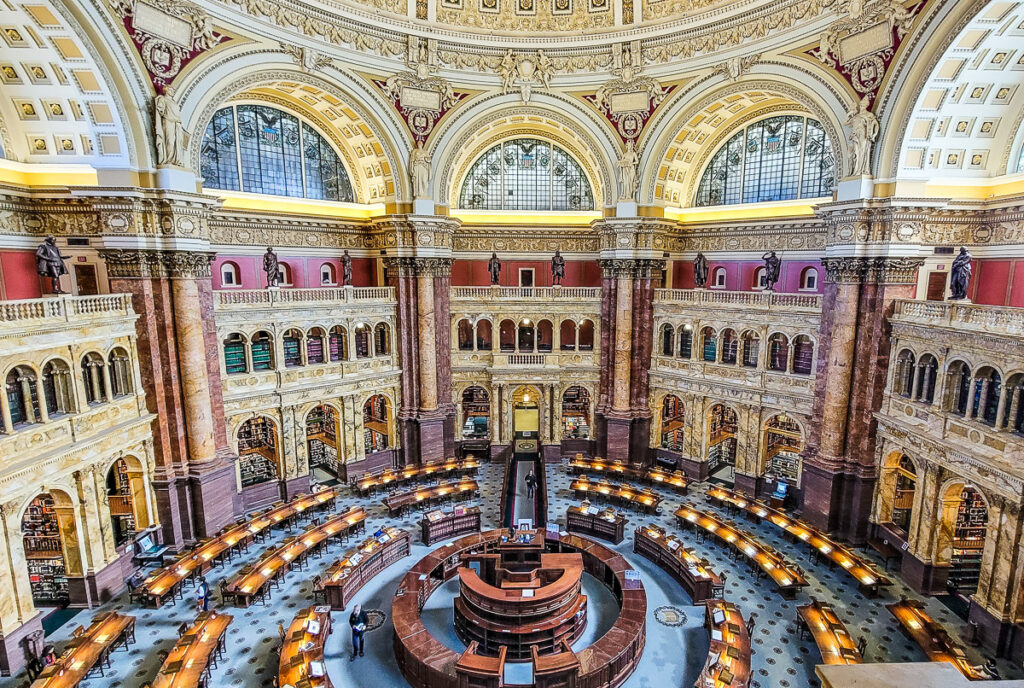
There are many reading rooms throughout the Library of Congress, but tourists can only see the Main Reading Room, which is a huge, circular space filled with wooden desks illuminated by antique lamps.
In the center of the room is a circular librarian’s helpdesk where researchers can obtain the books they need. This room is the principal point for gaining access to any of the works in the Library’s general collection.
Each day, hundreds of books are delivered to the Main Reading Room. General visitors cannot gain access to the floor, and can only see the Main Reading Room from the second-floor overlook.
But if you have a researchers permit or a free Reader Identification Card, you can access the reading room to find research material.
Surrounding the Main Reading Room are several smaller reading spaces tucked between arches and in alcoves.
These reading rooms are not open to the public and are only accessible by researchers, but you can still peer into them from the second-floor viewing space.
TOP TIP: There is a poster which explains the symbolism of the artwork and sculptures on the dome and walls of the Reading Room. Take time to read it, I appreciated the Reading Room all the more after connecting to it in this way.
Children’s Literature Center
If you’re visiting Washington DC with kids, then you’ll be thankful the library offers something for the kids, too.
While the rest of the Library of Congress is elegantly designed and represents sophistication and knowledge, The Children’s Literature Center is much more 21st century. It’s a simple but inviting room with comfy seats for reading and rows of bookshelves stacked from top to bottom.
The Children’s Literature Center grants visitors access to around 500,000 – 600,000 children’s books and resources. It even has the world’s smallest children’s book, Old King Cole (Published in 1985) in a glass cabinet.
If you want to bring your children here to read, you will need to register for a free Reader Identification Card. Once you received the card, you can just rock up and ask for a book as most of the children’s books are part of the Library’s General Collection.
It’s advised to reserve in advance though, to save time. If you’re looking for non-fiction children’s books, these are scattered throughout the Library’s complex so you will need to reserve them in advance.
If you’re looking for somewhere to visit with the kids on a rainy day in Washington DC, then be sure to visit this section of the library and get lost in some stories.
Opening Hours & Entrance Fee
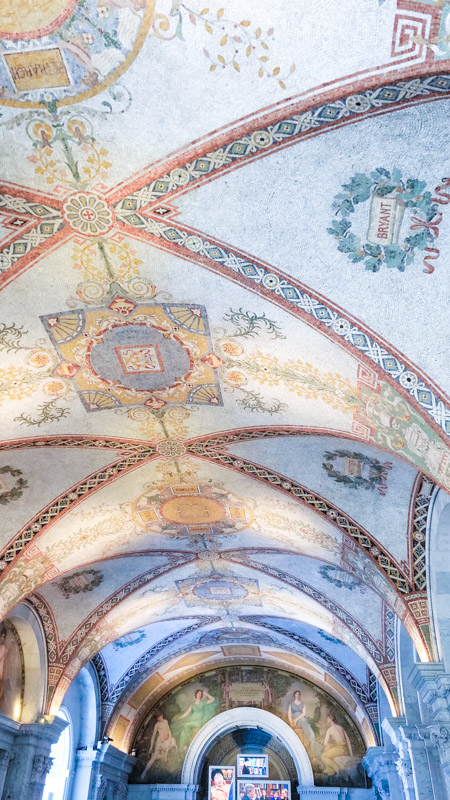
It’s free to visit The Library of Congress, making it one of the best free things to do in Washington D.C.
However, you do need to reserve a timed-entrance ticket. This is to ensure that the capacity of the library is at a safe level.
You can reserve your ticket online in advance, but you will also find a limited number of tickets become available each day at 9.00 am, so make sure you check the website at 9.00 am sharp to grab a ticket.
The timed-entry tickets allow you to explore the Library’s public spaces and exhibitions, but do not allow you to access material for research.
The library is open every Tuesday to Saturday and is closed on Mondays and Sundays (and Thanksgiving and Christmas).
The library opens from 10.00 am until 5.00 pm each day, except Thursday which is open until 8.30 pm. The last entry is 30 minutes before closing time.
The highest visitation is from 10:00 a.m. to 12:00 p.m. daily. During this timeframe, there may be long lines to access the Main Reading Room Overlook.
Thomas Jefferson Book Collection
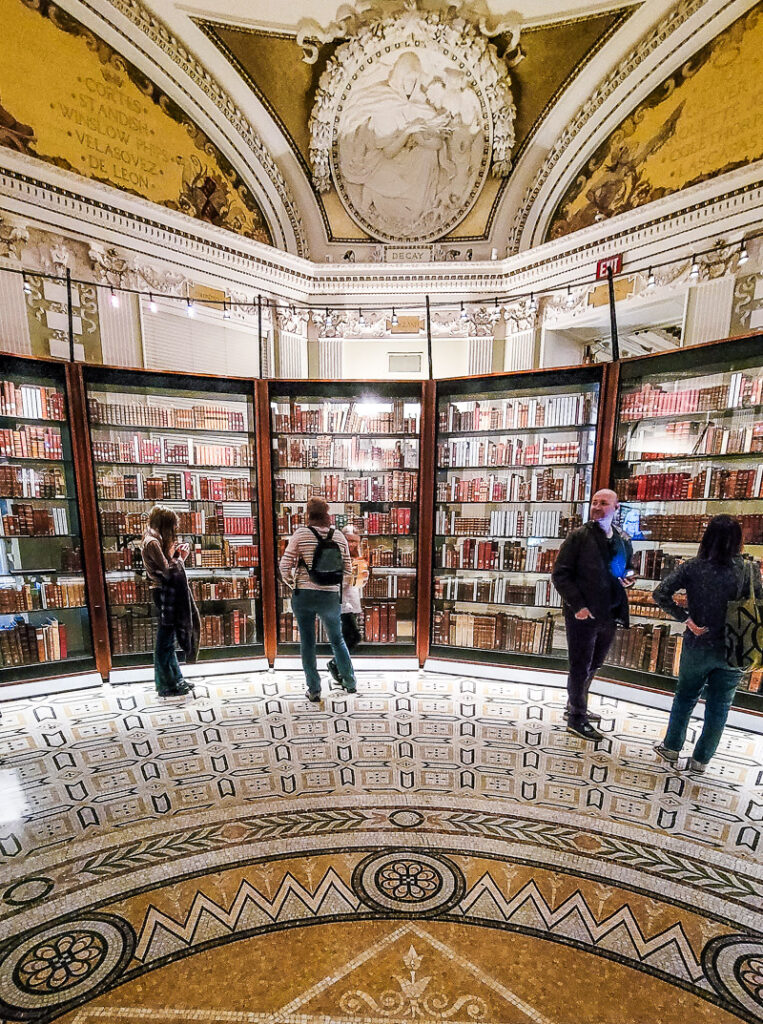
A highlight of a visit to the Library of Congress will be seeing Thomas Jefferson’s personal collection of 6,400 books that founded the Library of Congress.
In 1814, during the War of 1812, the British burned the Capitol and the Library of Congress. At this time, Thomas Jefferson had the largest personal collection of books in the United States. He offered to sell it to Congress as a replacement for the destroyed collection, and Congress accepted, purchasing it for $23,950 in 1815.
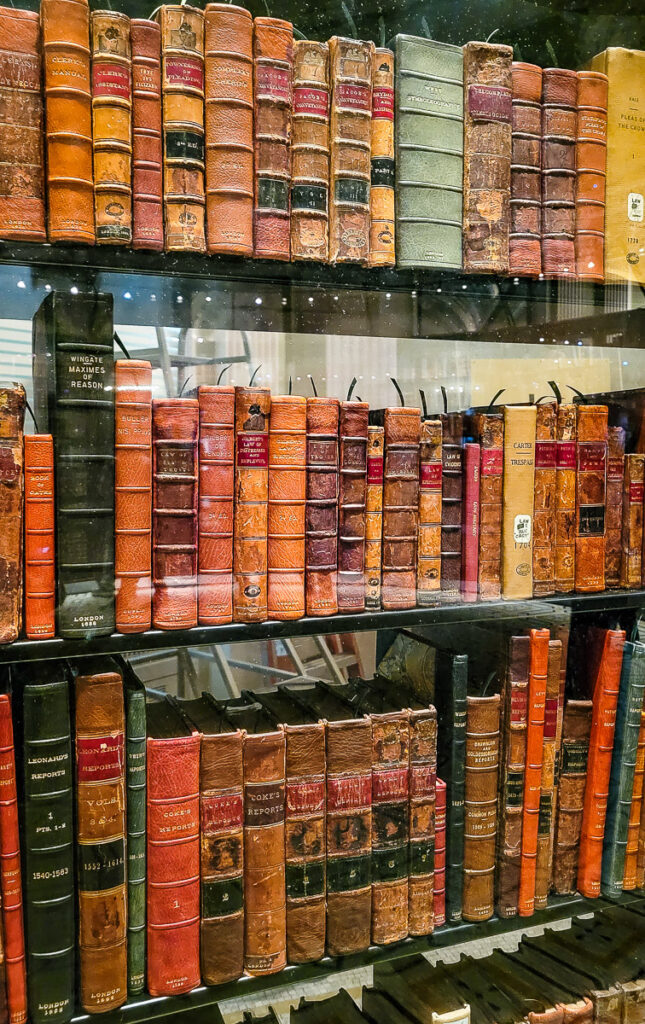
His collection is on permanent display behind glass in the Library’s Great Hall and have been arranged into categories of “Memory,” “Reason” and “Imagination” which to Jefferson meant, “History,” “Philosophy” and “Fine Arts.”
Exhibition: Not an Ostrich & other Images from America’s Library
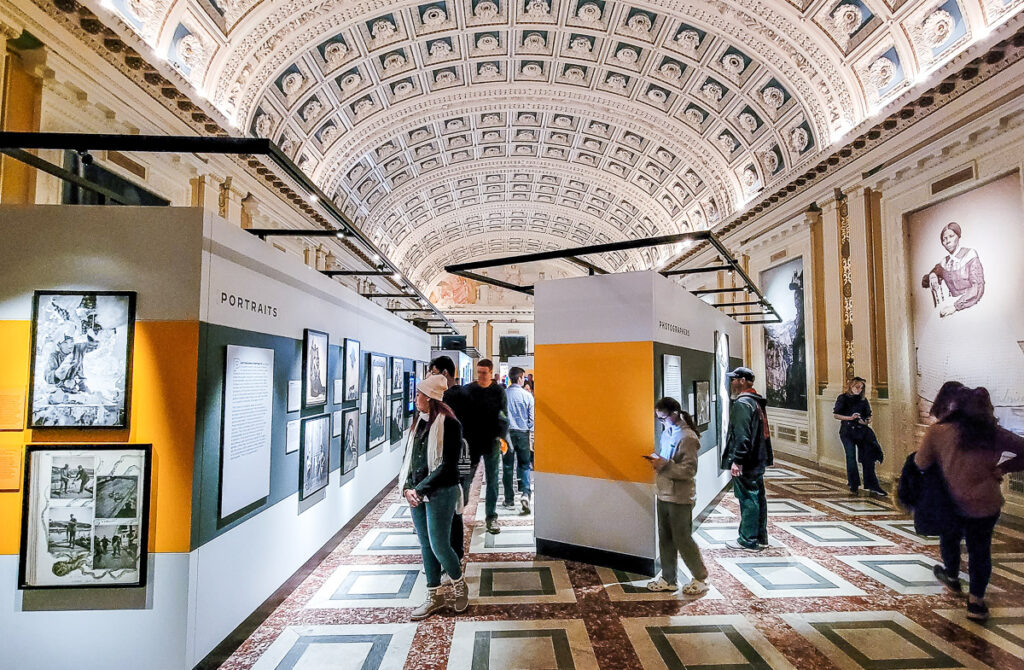
When we visited there was an exhibit showcasing stunning photography amassed by the library from 1839 to now.
Not an Ostrich includes famous pictures, famous subjects, and famous photographers capturing capture moments in history and social, political and religious life.
As we are new owners of two beautiful kittens, Ivy and Mavis, my favorite had to be this cat portrait, which depicts the Queen spirit of cats so well. And I loved the one of the hula-hooping grandmother.

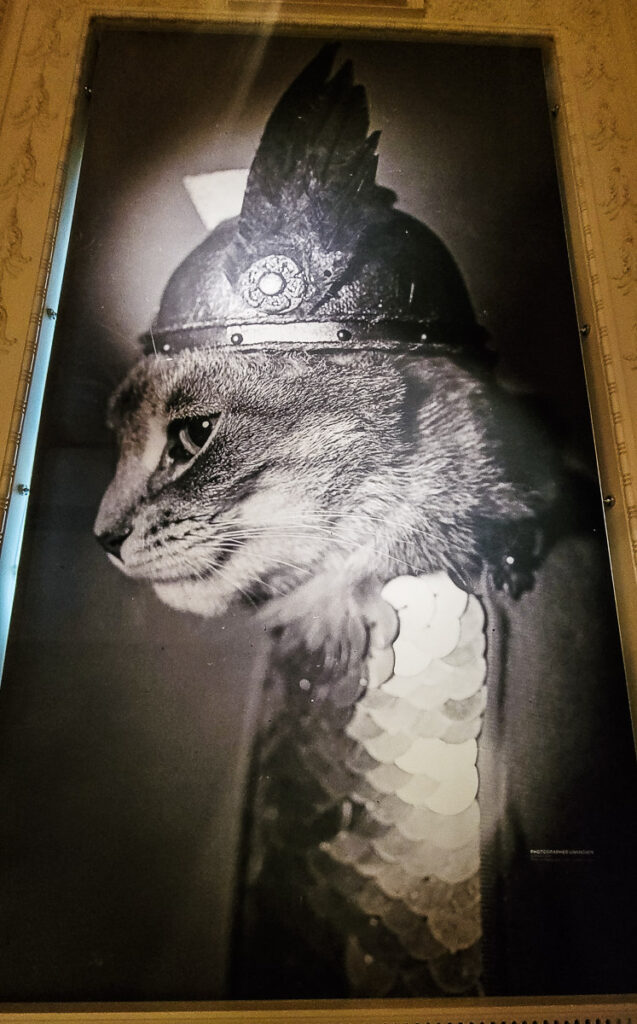
Tips for Visiting The Library of Congress
Before you visit the Library of Congress, make sure to follow these simple pieces of advice:
- Don’t bring any food or drink to the library. There are storage lockers where you can keep these items if you have any with you.
- Be quiet at all times. It may not be a conventional library, but it’s still a library. Turn off your phone and don’t make any loud noises.
- Be prepared for airport-style security screening.
- There’s no parking outside so take public transport to avoid spending hours (and a lot of money) on parking.
NOTE: You can do a paid guided tour of the Capitol Building and Library of Congress. It also includes a stop at the Supreme Court and the ability to relax as your guide shares the history and insider information. You also then won’t need to worry about reserving tickets in advance or waiting on long lines as your entry is included in the tour. Book your spot here.
FAQs About Visiting The Library of Congress
Here’s what people usually ask us about visiting The Library of Congress…
Can anyone visit the Library of Congress?
Yes, anyone can visit The Library of Congress, you just need to reserve your timed entrance ticket before you visit.
How long does it take to visit the Library of Congress?
It can take anywhere from 1-2 hours to see all the must-see parts of the Library of Congress such as the Main Reading Room, The Great Hall, and exhibitions.
What does the Library of Congress do?
The Library of Congress is one of the world’s top research libraries. It’s also home to the U.S. Copyright Office.
Before You Go
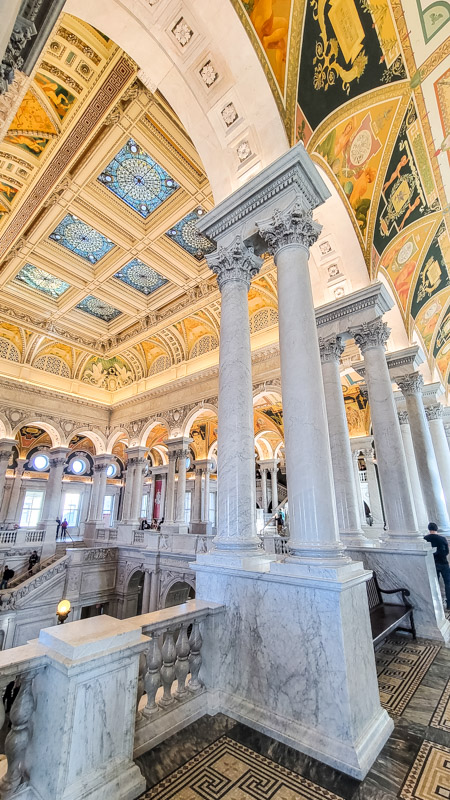
The Library of Congress is one of the top things to do in Washington and should not be missed off any Washington itinerary.
Located on The National Mall, you’ll find it hard to miss, and since it only takes a short while to visit, there’s no reason not to stop in and admire the architectural beauty of the place.
Before you go, make sure to remember that it’s not just a tourist attraction but a working library, which means some visitors are there for research purposes.
Please remember to be quiet when visiting and put your phone on silent. Make sure you have your ticket reserved before you go, or you won’t be allowed to enter.
If you are looking for accommodation in Washington DC, browse through the list below:
Have you visited The Library of Congress? Let us know about your experience in the comments!
[ad_2]
Source link
